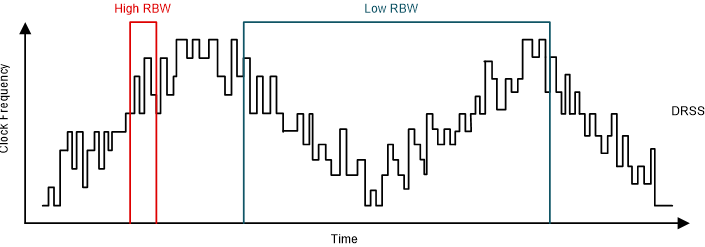ZHCSM29A September 2023 – June 2024 LM70840-Q1 , LM70860-Q1 , LM70880-Q1
PRODUCTION DATA
- 1
- 1 特性
- 2 应用
- 3 说明
- 4 说明(续)
- 5 Pin Configuration and Functions
- 6 Specifications
-
7 Detailed Description
- 7.1 Overview
- 7.2 Functional Block Diagram
- 7.3
Feature Description
- 7.3.1 Input Voltage Range (VIN)
- 7.3.2 High-Voltage Bias Supply Regulator (VCC, BIAS, VDDA)
- 7.3.3 Enable (EN)
- 7.3.4 Power-Good Monitor (PG)
- 7.3.5 Switching Frequency (RT)
- 7.3.6 Dual Random Spread Spectrum (DRSS)
- 7.3.7 Soft Start
- 7.3.8 Output Voltage Setpoint (FB)
- 7.3.9 Minimum Controllable On-Time
- 7.3.10 Error Amplifier and PWM Comparator (FB, EXTCOMP)
- 7.3.11 Slope Compensation
- 7.3.12 Shunt Current Sensing
- 7.3.13 Hiccup Mode Current Limiting
- 7.3.14 Device Configuration (CONFIG)
- 7.3.15 Single-Output Dual-phase Operation
- 7.3.16 Pulse Frequency Modulation (PFM) / Synchronization
- 7.3.17 Thermal Shutdown (TSD)
- 7.4 Device Functional Modes
-
8 Application and Implementation
- 8.1 Application Information
- 8.2
Typical Applications
- 8.2.1
Design 1 – High Efficiency, Wide Input, 400-kHz Synchronous
Buck Regulator
- 8.2.1.1 Design Requirements
- 8.2.1.2
Detailed Design Procedure
- 8.2.1.2.1 Custom Design With WEBENCH® Tools
- 8.2.1.2.2 Custom Design With Excel Quickstart Tool
- 8.2.1.2.3 Buck Inductor
- 8.2.1.2.4 Current-Sense Resistance
- 8.2.1.2.5 Output Capacitors
- 8.2.1.2.6 Input Capacitors
- 8.2.1.2.7 Frequency Set Resistor
- 8.2.1.2.8 Feedback Resistors
- 8.2.1.2.9 Compensation Components
- 8.2.1.3 Application Curves
- 8.2.2 Design 2 – High Efficiency 48V to 12V 400kHz Synchronous Buck Regulator
- 8.2.1
Design 1 – High Efficiency, Wide Input, 400-kHz Synchronous
Buck Regulator
- 8.3 Power Supply Recommendations
- 8.4 Layout
- 9 Device and Documentation Support
- 10Revision History
- 11Mechanical, Packaging, and Orderable Information
请参考 PDF 数据表获取器件具体的封装图。
机械数据 (封装 | 引脚)
- RRX|29
散热焊盘机械数据 (封装 | 引脚)
7.3.6 Dual Random Spread Spectrum (DRSS)
The LM708x0-Q1 provides a Dual Random Spread Spectrum (DRSS) function which reduces the EMI of the power supply over a wide frequency range. The DRSS function combines a low-frequency triangular modulation profile with a high frequency cycle-by-cycle random modulation profile. The low frequency triangular modulation improves performance in the lower radio frequency bands, while the high frequency random modulation improves performance in the higher radio frequency bands.
Spread spectrum works by converting a narrowband signal into a wideband signal which spreads the energy over multiple frequencies. Industry standards require different spectrum analyzer resolution bandwidth (RBW) settings for different frequency bands. The RBW has an impact on the spread spectrum performance. For example, the CISPR-25 requires 9kHz RBW for the 150kHz to 30MHz frequency band. For frequencies greater than 30 MHz, the required RBW is 120kHz. DRSS is able to simultaneously improve the EMI performance in the high and low RBWs with the low-frequency triangular modulation and high-frequency cycle-by-cycle random modulation as shown in Figure 7-3. In the low-frequency band (150kHz -30MHz), the DRSS function can reduce the conducted emissions by as much as 15dBμV, and in the high-frequency band (30MHz - 108MHz) by as much as 5dBμV.
The DRSS function can be enabled by connecting either a 41.2kΩ or 71.5kΩ resistor from the CONFIG pin to AGND. The DRSS function is disabled when an external clock is applied to the PFM / SYNCIN pin.
 Figure 7-3 Dual Random Spread Spectrum
Implementation
Figure 7-3 Dual Random Spread Spectrum
Implementation